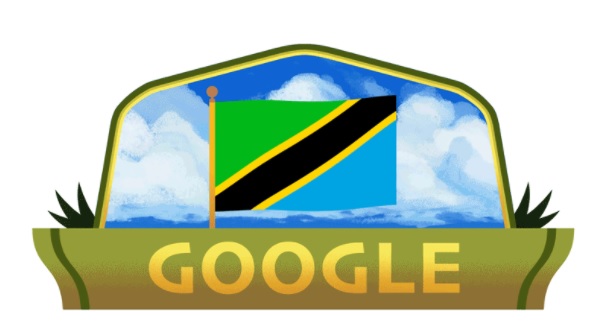Google doodle celebrates Tanzania’s Independence Day 2021

- Country:
- Tanzania
Happy Independence Day, Tanzania!
Today Google doodles on Tanzania’s Independence Day in commemoration of the day when Tanganyika, the mainland region of Tanzania, gained independence in 1961.
Tanganyika (present-day Tanzania) was a sovereign state that existed from 1961 until 1964. It first gained independence from the United Kingdom on 9 December 1961 as a state headed by Queen Elizabeth II before becoming a republic within the Commonwealth of Nations a year later.
After signing the Articles of Union on 22 April 1964 and passing an Act of Union on 25 April, Tanganyika officially joined with the People's Republic of Zanzibar to form the United Republic of Tanganyika and Zanzibar on Union Day, 26 April 1964. The new state changed its name to the United Republic of Tanzania within a year.
In 1947, Tanzania became a United Nations trust territory under British control. But two-thirds of the population lived in one-tenth of the territory because of water shortages, soil erosion, unreliable rainfall, tsetse fly infestations, and poor communications and transportation infrastructures.
After Tanzania became a UN trust territory, the British felt extra pressure for political progress. The British principle of "gradualism" was increasingly threatened and was abandoned entirely during the last few years before independence.
Five UN missions visited Tanzania, the UN received several hundred written petitions, and a handful of oral presentations made it to the debating chambers in New York City between 1948 and 1960. The UN and the Africans who used the UN to achieve their purposes were very influential in driving Tanzania towards independence.
Beginning in 1954, African nationalism centered on the Tanganyika African National Union (TANU), which was a political organization formed by Julius Nyerere ( a school teacher who was then one of only two Tanganyikans educated to university level, organized a political party) in that year as the successor to the TAA.
The TANU won the Legislative Council elections in 1958, 1959, and 1960, with Nyerere becoming chief minister after the 1960 election. Internal self-government started on 1 May 1961 followed by independence on 9 December 1961.
To celebrate 60 years of independence, more than 300 Tanzanians will reenact the pilgrimage to Mount Kilimanjaro, which is considered by many to be a symbol of liberation. Independence Day traditions also typically include cultural performances and official speeches at the National Stadium in the former capital of Dar es Salaam.
Traditional foods like Ugali (cornmeal porridge) and pilau (Tanzanian spicy rice) are enjoyed as citizens take time off work and school to reflect on the past and look forward to the East African nation’s future.
Also Read: Google doodle celebrates Morocco’s Independence Day 2021
Source: Wikipedia, Google Doodles










